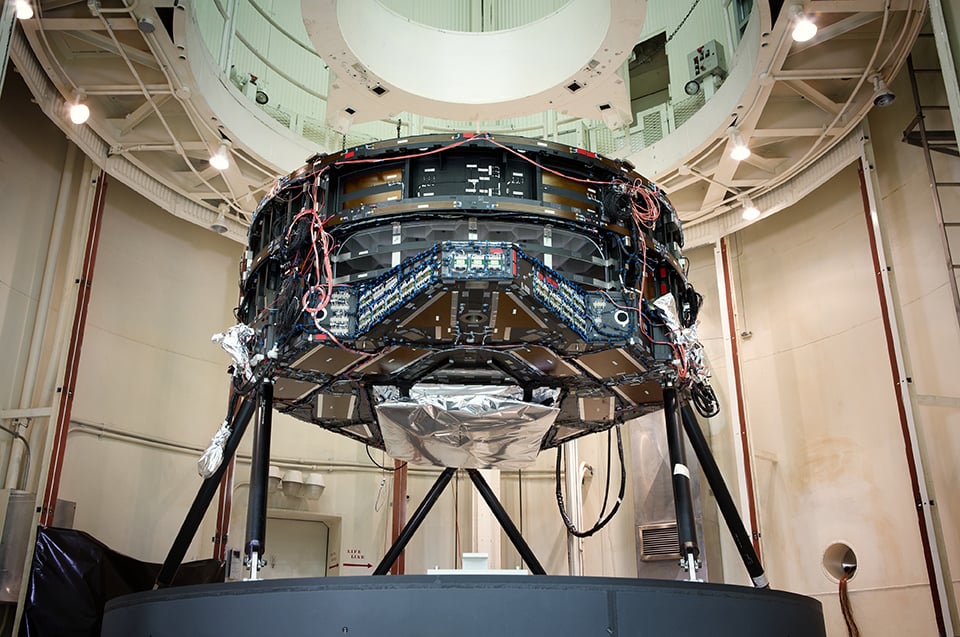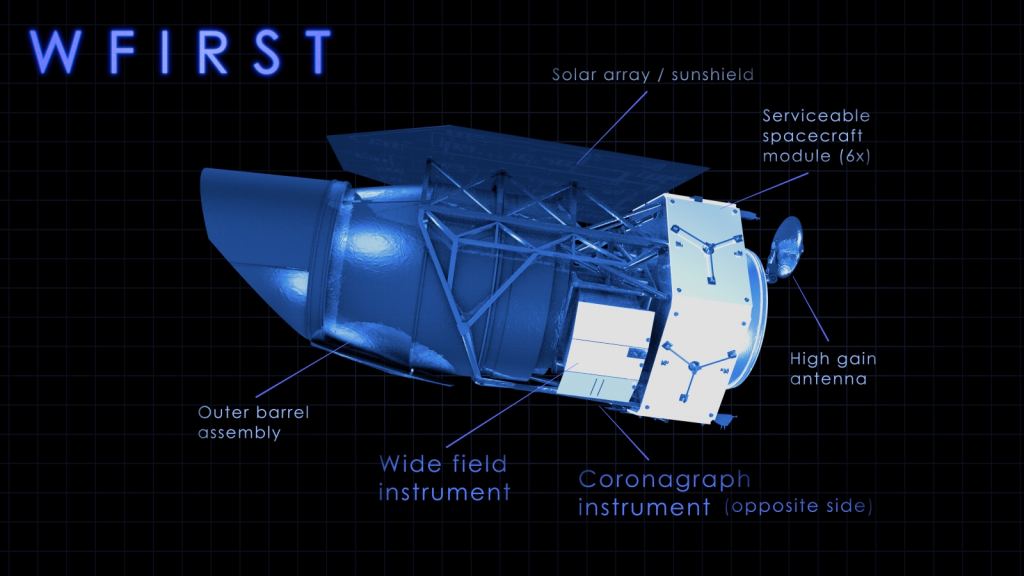WFIRST ain't your grandma's space telescope. Despite having the same size mirror as the surprisingly reliable Hubble Space Telescope, clocking in at 2.4 meters across, this puppy will pack a punch with a gigantic 300 megapixel camera, enabling it to snap a single image with an area a hundred times greater than the Hubble.
With that fantastic camera and the addition of one of the most sensitive coronagraphs ever made - letting it block out distant starlight on a star-by-star basis - this next-generation telescope will uncover some of the deepest mysteries of the cosmos.
Oh, and also find about a million exoplanets.
Strange Journey
In a recent white paper describing the project, WFIRST mission scientists outlined the ambitious plans of this instrument, set to launch in the mid-2020's (but NASA being NASA, don't exactly hold your breath on that).
What's most amusing about this whole project, however, was that it wasn't supposed to happen. Throughout the decades several teams had floated proposals for a new space-based telescope dedicated to the mission of cracking the mysteries of dark energy. All those proposals went nowhere, and it looked like nobody was going to get their space telescope wishes to come true.
And then the spies came to the rescue. In 2012 the National Reconnaissance Office, the folks in charge of designing and building secret satellites, found that they had a couple huge telescopes just sitting around in a black-site warehouse somewhere. So they did the saintly thing and classified them so they could give them to NASA to do something useful with them.
The actual mirror and housing of the telescope isn't the most expensive part, so it wasn't some huge budget relief for any of the proposals floating around, but politics being politics it gave the concept just enough oomph to get the ball rolling and turn it into a mission.
W Comes First in WFIRST
And so voilà: WFIRST, short for Wide-Field InfraRed Survey Telescope. The name itself is a little bit of a cosmology pun, because the primary goal of the mission is to investigate the nature of dark energy, the mysterious accelerating expansion of the univeres.
Where's the pun? Well since astronomers don't really understand the cause (or even the properties) of dark energy, they've taken to designing simple toy models to at least put some mathematical skin on the investigation. In this toy model, dark energy is imagined to be a fluid that soaks all of spacetime. And like any fluid, it has a density and a pressure.
What's more, you can define an equation of state that relates things like a fluid's density and pressure to each other. In the case of universe-accelerating pretend fluids, it turns out that the ratio of the pressure to the density is a very useful number, giving you a sense of just how bad the accelerated expansion is going to be.
And the symbol used to represent that ratio? w.
So for this mission, w comes first.
Planet Hunter Extraordinaire
Of course when you have a world-best camera attached to the business end of a decent-sized space telescope, you're allowed to have more than one science goal. And since this instrument will be taking lots of high-resolution pictures and staring off into space for good chunks of time, it also makes for an excellent planet hunter.
But it's not going to find planets using any of the traditional methods. Instead, it will use a technique called gravitational microlensing, when light from a distant star will bend around an interloping planet, causing a brief but telltale flare in the brightness of that star.
What's more, the addition of a coronagraph allows WFIRST to block out light from those distant stars, enabling it (again, with its giant camera) to take pictures directly of exoplanets.
Two major science goals in one tidy package, courtesy a spy agency. Oh, did I mention the guest investigator program? That means that, if your proposal is accepted, you might be able to turn the spacecraft around and do some good old-fashioned spying of your own.
Read more: " The Wide Field Infrared Survey Telescope: 100 Hubbles for the 2020s "
 Universe Today
Universe Today

